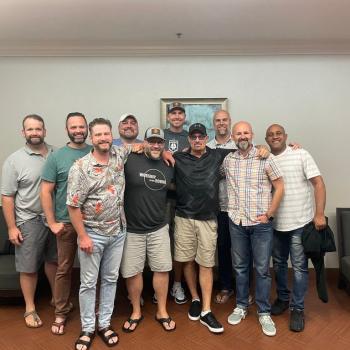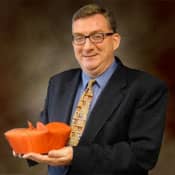 Emma Schmidt was 40 years old in 1928. An Iowa native, from childhood she was a practicing Catholic, but for twenty-six years she had experienced almost continual psychological and spiritual unrest. She heard voices sexually tempting her. Obsessive thoughts nearly drove her to suicide. Over time she developed an indefinable anger toward religious objects. When a priest blessed her, she flew into a rage and attacked him. She also found herself able to understand languages she never studied, like Latin and German.
Emma Schmidt was 40 years old in 1928. An Iowa native, from childhood she was a practicing Catholic, but for twenty-six years she had experienced almost continual psychological and spiritual unrest. She heard voices sexually tempting her. Obsessive thoughts nearly drove her to suicide. Over time she developed an indefinable anger toward religious objects. When a priest blessed her, she flew into a rage and attacked him. She also found herself able to understand languages she never studied, like Latin and German.
Doctors could find nothing physically wrong with her, so Emma looked to religion for help. But Church authorities are slow to acknowledge possession before extensive investigation. After carefully examining her case, Bishop Thomas Drumm of Des Moines gave the approval for Emma's exorcism. He then called Father Theophilus Riesinger (1868-1941), one of the few American priests known to have any experience in this controversial area.
 Born in Germany, at age 20 Riesinger joined the Capuchins, a branch of the Franciscan order, and was sent to America. Ordained in 1899, he was assigned to Manhattan. How his exorcism ministry began is unclear, but over time Church leaders called on him when addressing this sensitive issue. From 1912 until his death, he served in the Midwest. Preaching was his main work; exorcism was an occasional task assumed at a bishop's request. By 1928, he had performed nineteen of them.
Born in Germany, at age 20 Riesinger joined the Capuchins, a branch of the Franciscan order, and was sent to America. Ordained in 1899, he was assigned to Manhattan. How his exorcism ministry began is unclear, but over time Church leaders called on him when addressing this sensitive issue. From 1912 until his death, he served in the Midwest. Preaching was his main work; exorcism was an occasional task assumed at a bishop's request. By 1928, he had performed nineteen of them.
Father Carl Vogl, who interviewed everyone involved in Emma's case, published the story (with Church approval) in 1936. Begone, Satan! became the first American book to cover an official Catholic exorcism. Riesinger's friend, Father Joseph Steiger, pastor of a church in Earling, offered the use of a local Franciscan convent, where the exorcism occurred over three weeks during December 1928.
As Emma stepped off the train, she felt an overwhelming urge to attack the Sisters waiting there. At the convent, she was offered food that had been secretly blessed, but she refused, purring like a cat for hours. The next morning, Father Theophilus began the exorcism. Emma was placed on a bed, with a group of Sisters nearby. As the prayers began, Vogl writes, "a hair-raising scene occurred":
With lightning speed the possessed dislodged herself from her bed and from the hands of her guards; and her body, carried through the air, landed high above the door of the room and clung to the wall with a tenacious grip. All present were struck with a trembling fear. Father Theophilus alone kept his peace.
Later "a loud shrill voice rent the air . . . as though it were far off, somewhere in a desert." Everyone, Vogl records, was "struck with a terrible fear that penetrated the very marrow of their bones."
At times the work was unendurable. An unnatural stench filled the room, and though Emma ate little, she vomited dozens of times daily. She screamed and moaned for hours in unearthly voices "that no human could reproduce." Witnesses noticed that her "face became so distorted that no one could recognize her."
Riesinger identified four main spirits operating in Emma. One called itself Beelzebub, another Judas Iscariot. Two were spirits of deceased relatives. One was Emma's father Jacob, an alcoholic who sexually abused her and placed a curse on her. The other was her aunt Mina, Jacob's mistress, a child murderer who practiced witchcraft. When Emma was 14, Mina put a spell on her food. Father Theophilus asked the demon's intent. It answered: "To bring her to despair so that she will . . . hang herself! She must get the rope, she must go to hell!"
At one point, the possessed woman threatened Father Steiger: "Just wait until . . . Friday comes." A few days later, on his way to a sick call, he was involved in an automobile accident, but emerged uninjured. It was Friday. When he returned to the convent, he heard a roaring, bitter laughter: "It served you right!"
During the exorcism process it was noted that Father Theophilus seemed to age twenty years. Father Steiger was reaching his own endurance limit, and the Sisters approached collective breakdown. But they became hopeful after St. Thérèse of Lisieux, known as the "Little Flower," appeared to Emma, saying: "Do not lose courage! The end is soon at hand." On the ceiling they saw roses, traditionally understood as evidence of Thérèse's intervention.
On December 23rd, Emma broke her grips and stood up. Father Theophilus blessed her, shouting: "Depart, ye fiends of Hell! Begone, Satan, the Lion of Judah reigns!" Voices responded: "Beelzebub . . . Judas . . . Jacob . . . Mina . . . Hell . . . Hell . . . Hell!" As they faded, Emma opened her eyes. Her first words were, "Praised be Jesus Christ!" The entire company of priests and nuns broke down in tears.





